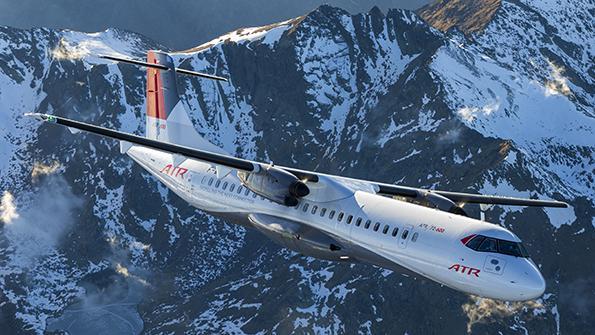ATR Looks To Make Embraer’s Regional Market Entry Challenging

This is an abbreviated version of the article “Regional Aircraft Market To Feature New Engines, Models” by Jens Flottau and Guy Norris from Aviation Week & Space Technology.
Find out more about becoming an Aviation Week & Space Technology subscriber here.
Under the circumstances, ATR is in a relatively comfortable place. Following the exit of its former regional aircraft rival Bombardier and the at least preliminary end of De Havilland Dash 8-400 production, it temporarily enjoys a monopoly in the regional turboprop market. But with its competitor Embraer slowly firming up plans to offer two new large turboprops, ATR has decided to make Embraer’s market entry as hard as possible.
“At ATR, we are committed to zero emissions by 2050. That’s a goal and a major milestone the entire industry set for itself,” says ATR CEO Stefano Bortoli. “But it has to be affordable, and what we are bringing to you today is an innovation that is new technology, it’s affordable, and it’s listening to customers.
- New Pratt & Whitney Canada PW127XT offers lower fuel burn and maintenance costs
- Embraer turboprop project focuses on engine OEM discussions
- E190 and E195s considered for cargo conversions
Discussions with engine-makers are also “the most active part of the turboprop project right now,” says Embraer Commercial Aviation CEO Arjen Meijer.
The Brazilian manufacturer has proposed to airlines a family of two roughly 70-90-seat turboprops with conventional powerplants to enter service early in the second half of the decade.
More than fuel burn, maintenance costs have been a target area for improvements at rival ATR. The 70-seat variant of the proposed Embraer turboprop is pitched at U.S. regional airlines seeking to replace aging 50-seat jets.

Credit: Pratt & Whitney Canada
The U.S. market in general has long moved away from flying turboprops, and ATR is relying essentially on all other regions for new sales. It is even more important to improve the efficiency of its aircraft for those markets.
As with other P&WC engines, the PW127XTs are certified for a blend of sustainable aviation fuel (SAF) of up to 50%.
P&WC’s move with ATR to offer a near-term performance, operability and sustainability upgrade for the PW127-powered ATR 42/72 also comes as both companies explore longer-term unconventional propulsion options.
The engine-maker also is working with De Havilland.
ATR meanwhile is seeing an increasing number of its operators also planning to switch to hydrogen-fuel-cell-based propulsion.
Embraer also is looking at opportunities in other segments of the regional aircraft market, particularly freighters.
The industry will be about 20% smaller than previously anticipated throughout the forecast period, Embraer expects, but demand still will grow because 60% of aircraft are to be used as replacements rather than for growth.
The company forecasts that airlines and lessors will order 8,640 jets and 2,260 turboprops.
Read the article, "Regional Aircraft Market To Feature New Engines, Models" in full




